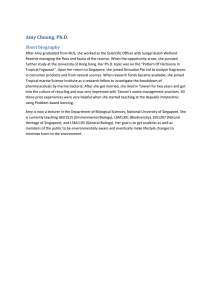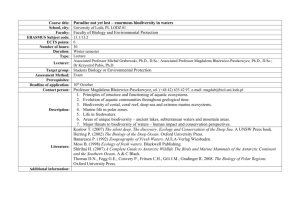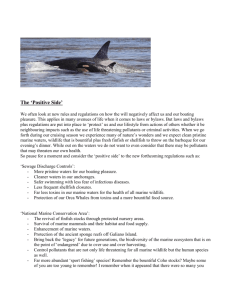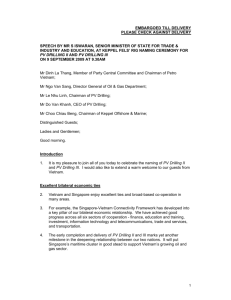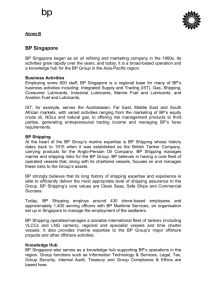Video transcript
advertisement
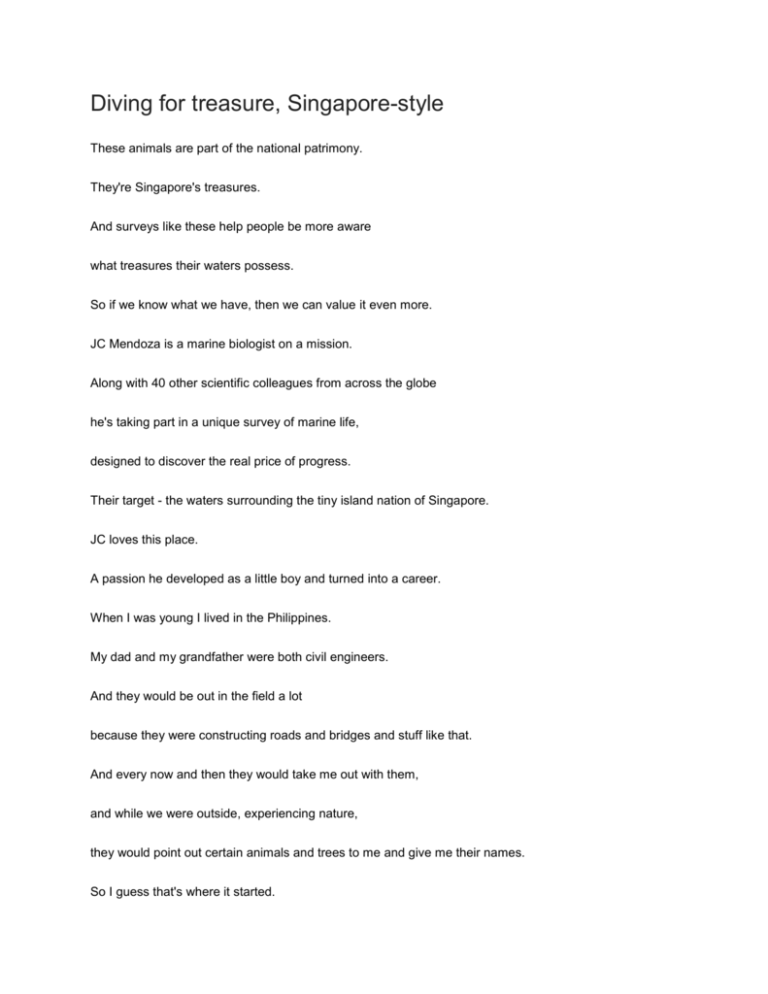
Diving for treasure, Singapore-style These animals are part of the national patrimony. They're Singapore's treasures. And surveys like these help people be more aware what treasures their waters possess. So if we know what we have, then we can value it even more. JC Mendoza is a marine biologist on a mission. Along with 40 other scientific colleagues from across the globe he's taking part in a unique survey of marine life, designed to discover the real price of progress. Their target - the waters surrounding the tiny island nation of Singapore. JC loves this place. A passion he developed as a little boy and turned into a career. When I was young I lived in the Philippines. My dad and my grandfather were both civil engineers. And they would be out in the field a lot because they were constructing roads and bridges and stuff like that. And every now and then they would take me out with them, and while we were outside, experiencing nature, they would point out certain animals and trees to me and give me their names. So I guess that's where it started. Tiny crab. I'll put it in the container. But it's also here that has experienced the most from the rapid pace of development. In its 50-year history Singapore has driven rates of urbanisation the envy of the Western world. In the process more than 200 square kilometres of land has been dredged from the ocean and reclaimed and the world has seen the creation of one of its biggest and busiest ports. The big question is how much of a toll has that had on Mother Nature. A large part of the answer lies below the surface. And JC with help of scientists, like Professor Charles Messing are trying to determine what has been affected and by how much. We've been dredging for a couple of weeks and bringing up some specimens and they're all chewed up on rocks. So I'm going to go down in fairly deep water, maybe 15 metres or so. and try to find the same animals alive intact. And bring them up so I can study them more easily. Professor Messing is used to working off the Florida coast. His speciality is the tiny sea creature known as feather stars. This is the centre of biodiversity in the tropical oceans of the world. So on a single reef in Singapore which is right on the edge of it I can find 15 or 20 species of feather stars. There aren't 15 or 20 species of feather stars in shallow water throughout the entire western Atlantic Ocean. So this is where it's happening. This is where we come to look at diversity. And today, in the midst of a commercially busy shipping channel, some surprisingly good visibility yields very positive results for the diving team. So I got down to the bottom, about 17 metres, which was deeper than I expected to go. There are a lot of soft corals, a lot of sea whips. And beautiful white sea fans. Then I gradually moved up and there were larger numbers of crinoids than I'd seen on any dive before. One discovery that surprised even a veteran professor. This, I don't know how well you can see it from the bag... This is an example of the first species that was ever collected from Singapore waters in the middle of the 19th century. And so it's nice to know it's still here. Perhaps the other surprise is the source of the funds behind this scientific expedition. Energy company Shell was the first to sign up to back the initiative three years ago. With countless operations in the region, it recognises the need to be proactive in understanding and protecting the environment as well as drawing from it. When you build a plant, when you take cooling water, when you discharge water back into the sea, and all these do impact on marine life. By understanding the needs of the organisms and marine life that live in the sea we'd be better able to tailor our operations to make sure we have as little negative impact on their existence. It's not very common in Southeast Asia for this sort of concerted efforts, you know, because it requires a lot of funding, requires a lot of manpower, a lot of logistics, so this is one of the rare ones in the region in definitely a while. So that's really really exciting. To these scientists the excitement is also about the future. This survey is not just collecting species. It's also preserving. Each specimen collected is recorded with its DNA stored in cryogenic freezing units Storing samples at -170 degrees for up to 50 years. The idea is to set up a tissue bank for future molecular work. because at the moment molecular work may be a little bit expensive. Especially next generation sequencing costs a few thousand dollars per sample. But in the next two years the price may get down drastically. There has never been such a systematic survey of marine life in these waters. Hopefully as well as plugging a much needed knowledge gap it will also allow industry and science to better understand how conservation and development can coexist. We do need development because it leads to better life for people. But in doing so we need to be responsible. I guess you do need this kind of passion, this sense of mission that you know you're one of the good guys. You're documenting life on this planet in the hope that it will help inform if not this present generation, then the generations to come.
